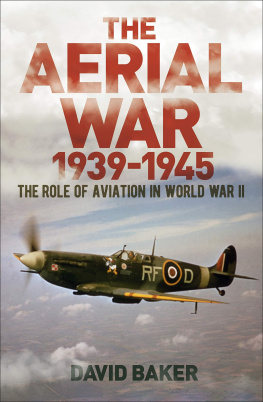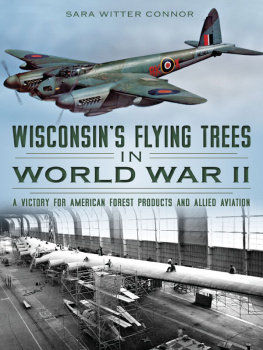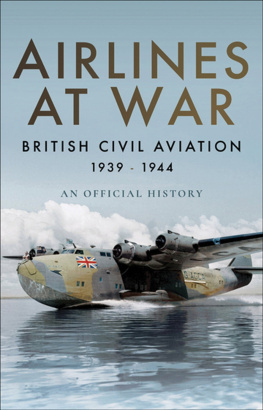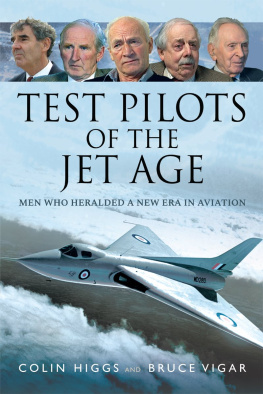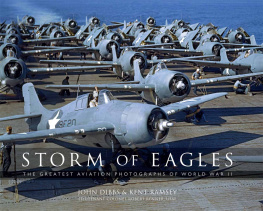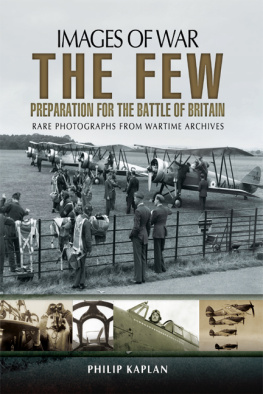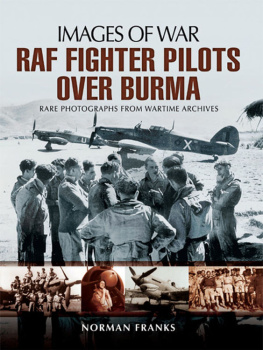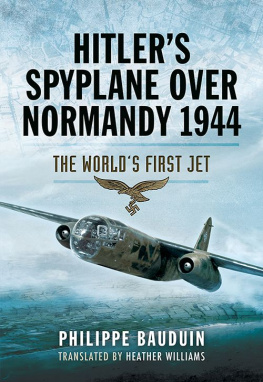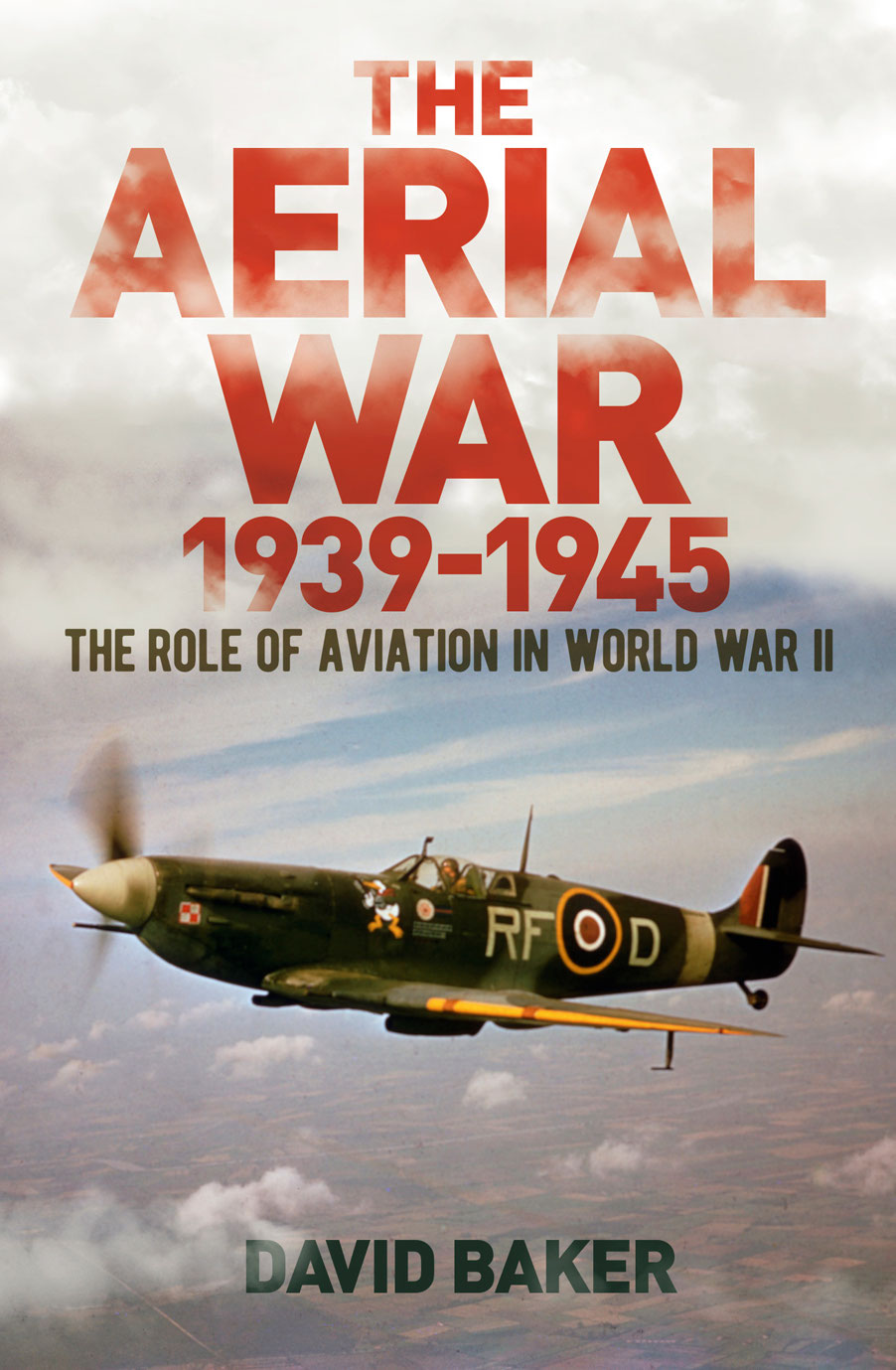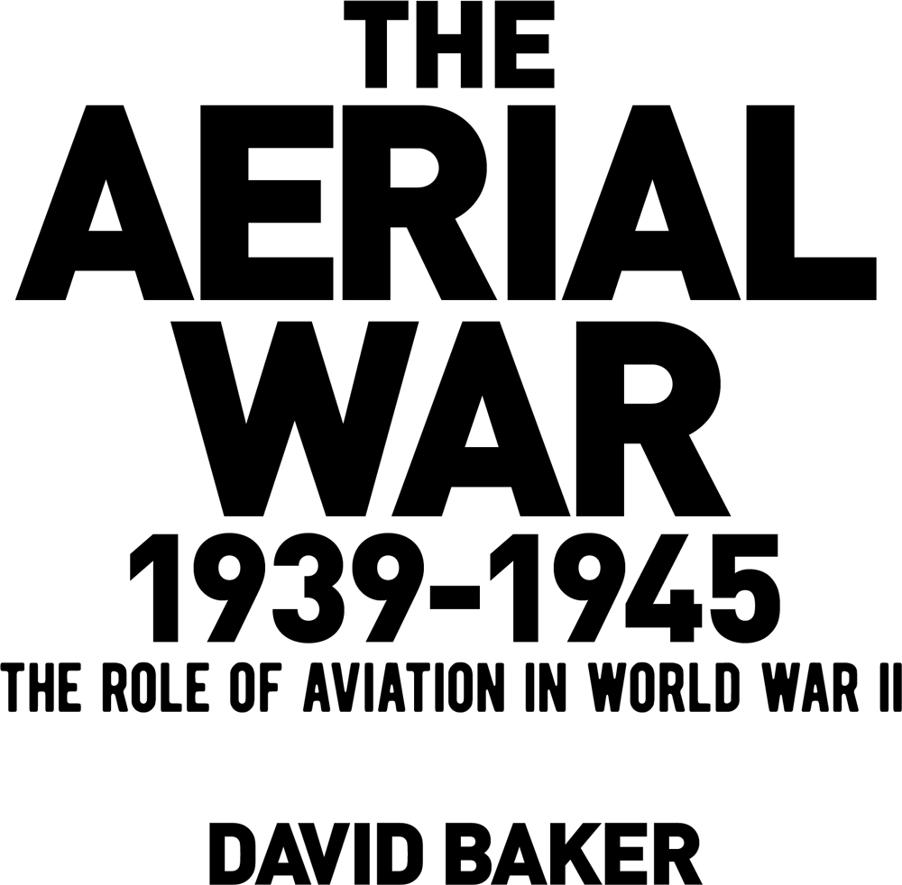Contents
INTRODUCTION
This book tells the story of aerial warfare during the 193945 conflict a period in which the belligerent powers built more than 780,000 aircraft and developed new ways of waging war from the air. It saw the origin and evolution of entirely new types of aircraft, including jet and rocket-powered interceptors and means by which countries could be brought down. It is also the story of heroic deeds of survival on both a personal and a national level and of the stoicism and determination that empowered ordinary people to do extraordinary things.
From the outset, Hitlers Germany built its military around a blitzkrieg concept, supporting ground forces by massive air power, disregarding the need for a strategic bomber force until it was too late. The British focused, perhaps illogically, on the ability of the bomber to bring an enemy to its knees (which it never did) while using fighters to defend the country during the Battle of Britain. Russia prioritized massive ground forces to roll back the Nazi intruder, while the Americans bequeathed to future strategists the aircraft carrier, which ousted the battleship as the Navys primary warship.
World War II was unique in that it saw the greatest expansion of conflict in the last 200 years, applying technology unheard of in preceding decades. Such innovation itself was nothing new: in the American Civil War of 186165, the technologies of barbed wire, balloons for aerial reconnaissance and primitive submarines were first used; and the 191418 war saw the introduction of aeroplanes to warfare on a limited scale, as well as the first use of powered flight to bomb strategic targets, albeit on an experimental basis. The 193945 conflict, however, greatly expanded aerial warfare, introducing the mass bombing of urban and industrial areas, the inauguration of jet fighters, the introduction of the ballistic missile, and the first use of the atomic bomb. During this conflict, approximately 2 million civilians died as a result of bombing. Although this represented less than 4 per cent of the total 55 million killed, the mass bombing of civilians undoubtedly introduced a new chapter in the history of warfare.
Transcending the primitive technologies of earlier conflicts, this period also saw the application of science through radio, radar and electronic devices to enhance the war-fighting potential of relatively conventional systems. What began as a war of conquest and ideological confrontation turned quickly into an experimental proving ground for radical new ways of waging war, as well as for globalizing conflict at an unprecedented level.
The story of aerial warfare from 193945, then, is a tale of transformational scaling which evolved as it progressed, science and its application in technology forging new and increasingly sophisticated designs and devices. These would underpin the post-war expansion of military capabilities and launch new and increasingly capable weapons systems on the world weapons of such terrifying magnitude in their use that they would, on several occasions, bring the world close to a third global conflict.
All these factors converge to justify an examination of how this came about a reminder of the extraordinary expansion of science and engineering in those six turbulent years that framed the world of today. In a quite extraordinary way, the development of aerial warfare defined the future pattern of conflict resolution. By creating weapons of such unimaginable destructiveness, it became possible for nuclear-equipped nations to justify their possession as a means of deterring conflict.
This book is written from an apolitical stance, one in which the morality of aerial warfare is left to the judgement of the reader. It has been the purpose here merely to state the facts in a loosely chronological order, starting with the formation and development of the Luftwaffe, the Polish Air Force and the RAF and moving on to the respective air forces and actions of France, Russia, the USA and Japan and to explain how the belligerent powers came to use the aeroplane for their own political and military purposes. It has been written after consultation with pilots, air crews, strategists and war planners over several decades, in the UK, the USA, Germany, Russia and Japan, in the hope that it can throw fresh light on what was, to this date, the greatest clash of arms in modern times.
David Baker
CHAPTER 1
The Start of the Aerial War
At precisely 4.45 am local time on 1 September 1939, the aged German battleship Schleswig-Holstein fired its guns on a Polish transit depot near the Free City of Danzig on the Baltic coast the opening shots of World War II. By this hour, clandestine German forces had already begun moving quietly on to Polish territory. Shortly afterwards, the Luftwaffe began attacking Polish airfields, towns, the capital Warsaw and defending ground units. So began the conflict that would, within days, sink the entire European continent into a war that would engulf the world and cause the deaths of more than 50 million people before it ended just over six years later.
At first, it was not a global war. Russia had just days earlier signed a pact with Nazi Germany pledging support for its offensive and agreeing to advance on Poland from the east less than three weeks into the invasion. To secure this partnership, Germany acquiesced to Soviet claims on the Baltic states of Estonia, Latvia and Lithuania and to Russias desire to invade Finland, expanding its territorial claim to the border with Sweden. Not until June 1941 would Germany turn against Russia and make it an ally of Great Britain. Then, little more than five months later, on 7 December 1941, Japan joined the fray as it pushed its forces south while simultaneously attacking the US naval base at Pearl Harbor in the Pacific Ocean, bringing the USA into the conflict. From that date on it really was a world at war.
From the beginning, air power was a dominant factor in the outcome of land battles and would eventually be the means used to deploy the ultimate weapon the atomic bomb. By the end of World War II, more bomb tonnage had been dropped by air than all the munitions detonated in every conflict since medieval times, killing more civilians than had died in every war since records began.
Aviation itself had come of age during World War I. Out of what in 1914 and 1915 began as a limited use of aeroplanes to spot artillery and conduct reconnaissance grew an increasing application during 1916 of one-on-one aerial combat dogfighting and, from 1917, the use of large aircraft for strategic bombing. Together, the fighter and the bomber gradually defined the application of aircraft for defensive and offensive requirements, the latter undermining the immunity granted to civilian populations of enemy states by the Hague Convention on the rules of war.
It was the use of Zeppelin and Schtte-Lanz airships in 1915 that opened the door to attacks on civilians. Initially, the Kaiser banned attacks on London except for the financial and business sector in the City, and then only after hours when the employees had left for home. However, this restriction did not last long and the bombing of towns and cities by airships across the UK increased, especially after June 1917, when the airships were joined by multi-engine bombers. It was in that year, too, that the British set up the Independent Force, which was equipped with four-engine Handley Page bombers. These were set the specific task of bombing strategic targets in Germany and on German-occupied marshalling yards and military stores elsewhere. As a result of these actions, the concepts of strategic bombing (the destruction of infrastructure empowering an enemy to continue to fight) and tactical bombing (the use of air power to inhibit an army in the field or during an assault) were first defined.

